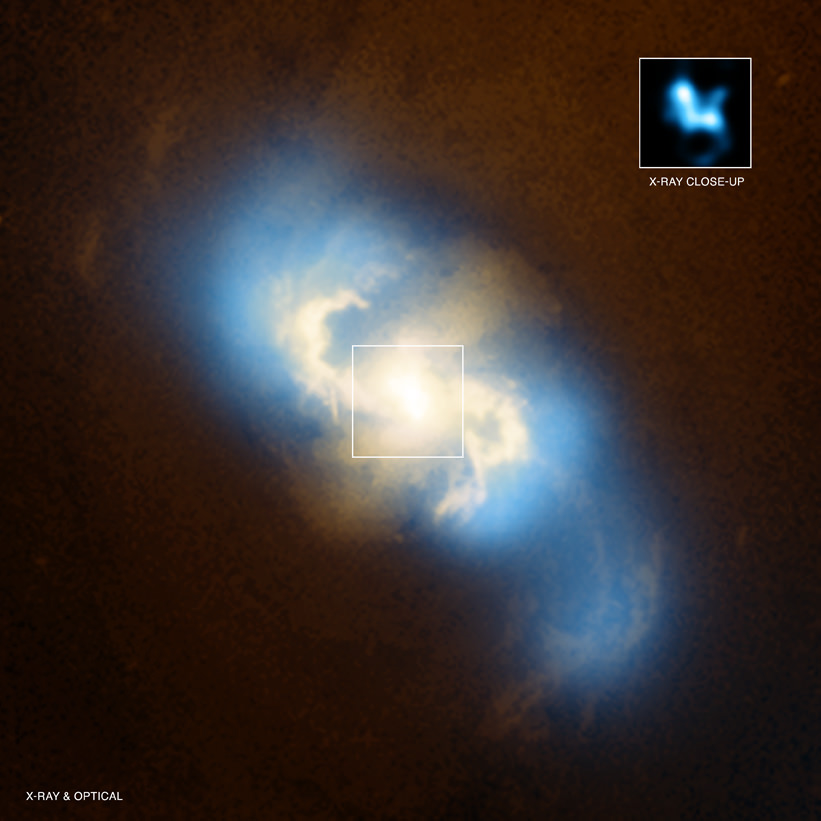[/caption]
About 160 million light years away in the constellation of Hydra, spiral galaxy NGC 3393 has been keeping a billion year old secret. It might have a poker face, but it has a pair of black holes up its sleeve…
Using information obtained through NASA’s Chandra X-ray Observatory combined with Hubble Space Telescope imaging, scientists have uncovered first time evidence that NGC 3393 is harboring twin supermassive black holes. Residing only 490 light years apart, the duo may have been the product of a “minor merger” – where a small and large galaxy met. Although the hypothesis of two black holes within one galaxy isn’t new, it has been difficult to prove because the results of two galaxies combining material would result in a rather ordinary looking spiral.
“The current picture of galaxy evolution advocates co-evolution of galaxies and their nuclear massive black holes, through accretion and galactic merging.” says G. Fabbiano, lead author of a recent Nature paper. “Pairs of quasars, each with a massive black hole at the centre of its galaxy, have separations of 6,000 to 300,000 light years and exemplify the first stages of this gravitational interaction.”
If scientific calculations are correct, a smaller galaxy should have contained a smaller mass black hole. This leaves us with an odd situation. If both of these newly discovered black holes have similar mass, shouldn’t the merging pair also be of similar mass? If so, how could a minor merger be the answer?
“The final stages of the black-hole merging process, through binary black holes and final collapse into a single black hole with gravitational wave emission, are consistent with the sub-light-year separation inferred from the optical spectra and light-variability of two such quasars. The double active nuclei of a few nearby galaxies with disrupted morphology and intense star formation demonstrate the importance of major mergers of equal-mass spiral galaxies in this evolution.” says Fabbiano. “Minor mergers of a spiral galaxy with a smaller companion should be a more common occurrence, evolving into spiral galaxies with active massive black-hole pairs, but have hitherto not been seen. The regular spiral morphology and predominantly old circum-nuclear stellar population of this galaxy, and the closeness of the black holes embedded in the bulge, provide a hitherto missing observational point to the study of galaxy/black hole evolution.”
Lay down your bets, gentlemen… It seems the game changes each time it is played!
Original Story Source: Chandra News. For Further Reading: A close nuclear black-hole pair in the spiral galaxy NGC 3393.

